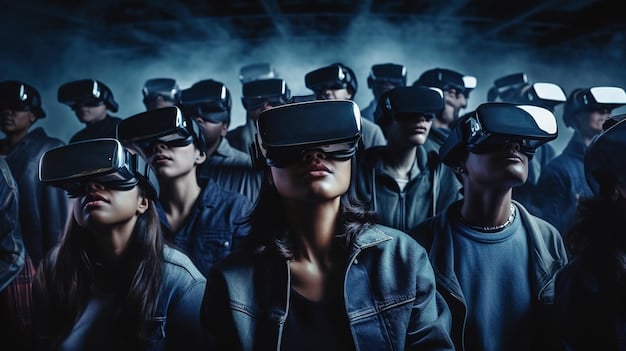Virtual reality (VR) has evolved beyond gaming and entertainment it’s now transforming how we live, work, and interact. DigiLife VR Lifestyle represents the next frontier in immersive digital experiences, blending cutting-edge technology with everyday activities. In this comprehensive guide, we’ll explore how VR is reshaping lifestyles, the benefits of adopting a DigiLife VR Lifestyle, and what the future holds for this revolutionary trend.
What Is DigiLife VR Lifestyle?
DigiLife VR Lifestyle refers to the integration of virtual reality into daily routines, enhancing productivity, social interactions, fitness, education, and entertainment. Unlike traditional VR applications focused solely on gaming, DigiLife VR Lifestyle encompasses a holistic approach, making virtual environments an extension of real life.
Key Components of DigiLife VR Lifestyle
A. Virtual Workspaces – Remote work is evolving with VR offices, allowing professionals to collaborate in 3D environments.
B. Social VR Platforms – Virtual hangouts, events, and meetings replace physical gatherings.
C. Fitness & Wellness – VR workouts, meditation, and therapy provide immersive health solutions.
D. Education & Training – Schools and corporations use VR for interactive learning and simulations.
E. Entertainment & Gaming – Beyond games, VR offers concerts, movies, and virtual tourism.
Benefits of Adopting a DigiLife VR Lifestyle
1. Enhanced Productivity & Remote Work
VR workspaces eliminate geographical barriers, enabling seamless collaboration. Tools like Meta Horizon Workrooms and Microsoft Mesh allow teams to interact in virtual offices, improving efficiency.
2. Immersive Social Interactions
Platforms like VRChat, AltspaceVR, and Rec Room let users socialize in customizable virtual worlds, making long-distance communication more engaging.
3. Revolutionary Fitness & Health Solutions
VR fitness apps like Supernatural and FitXR offer gamified workouts, while VR therapy aids in mental health treatment through exposure therapy and relaxation programs.
4. Next-Level Education & Training
Medical students practice surgeries in VR, pilots train in flight simulators, and history lessons become interactive experiences—making learning more effective.
5. Limitless Entertainment Options
From virtual concerts featuring artists like Travis Scott in Fortnite to exploring the world via Google Earth VR, entertainment has never been more immersive.
How to Transition into a DigiLife VR Lifestyle
A. Choosing the Right VR Headset
-
Meta Quest 3 – Best for standalone VR with no PC required.
-
Valve Index – High-end PC VR with superior tracking.
-
PlayStation VR2 – Ideal for gamers on PS5.
-
HTC Vive Pro 2 – Professional-grade VR for businesses.
B. Essential VR Apps & Platforms
-
Work: Spatial, Immersed, Horizon Workrooms
-
Social: VRChat, Bigscreen, AltspaceVR
-
Fitness: Supernatural, Beat Saber, FitXR
-
Education: Engage, Unimersiv, Mondly VR
C. Creating a VR-Friendly Space
-
Ensure a clutter-free area for safe movement.
-
Use VR mats to stay within boundaries.
-
Invest in accessories like haptic gloves for realism.
The Future of DigiLife VR Lifestyle
By 2030, experts predict VR will be as common as smartphones. Advancements like haptic feedback suits, brain-computer interfaces (BCIs), and photorealistic avatars will deepen immersion. Companies like Meta, Apple, and Sony are investing billions to make VR an everyday necessity.
Potential Challenges
-
Motion Sickness – Some users experience discomfort.
-
High Costs – Premium VR setups remain expensive.
-
Privacy Concerns – Data security in virtual spaces needs improvement.
Conclusion
The DigiLife VR Lifestyle is no longer science fiction it’s the future of human interaction, work, and leisure. As technology advances, VR will become more accessible, transforming how we experience reality. Whether for productivity, fitness, or entertainment, adopting a DigiLife VR Lifestyle opens doors to endless possibilities.














